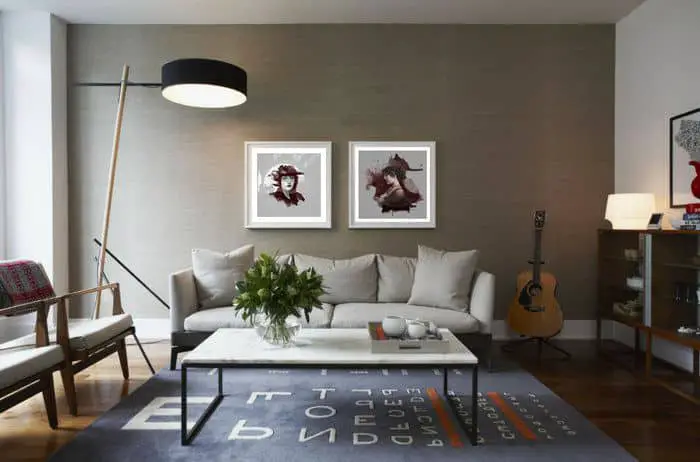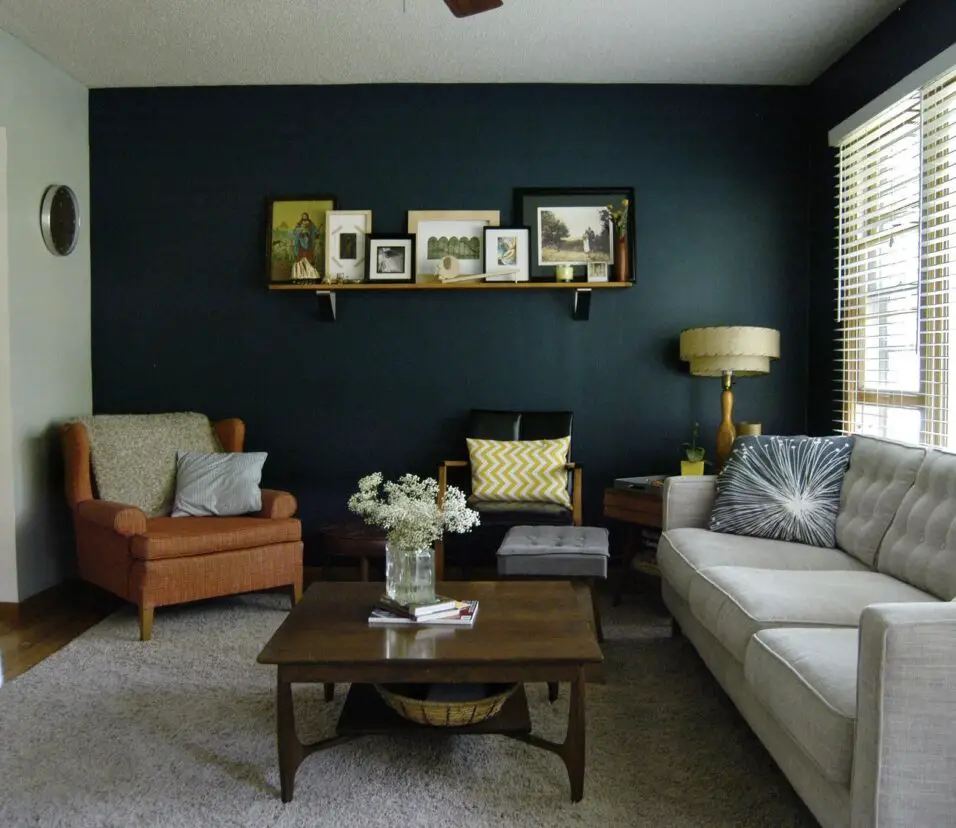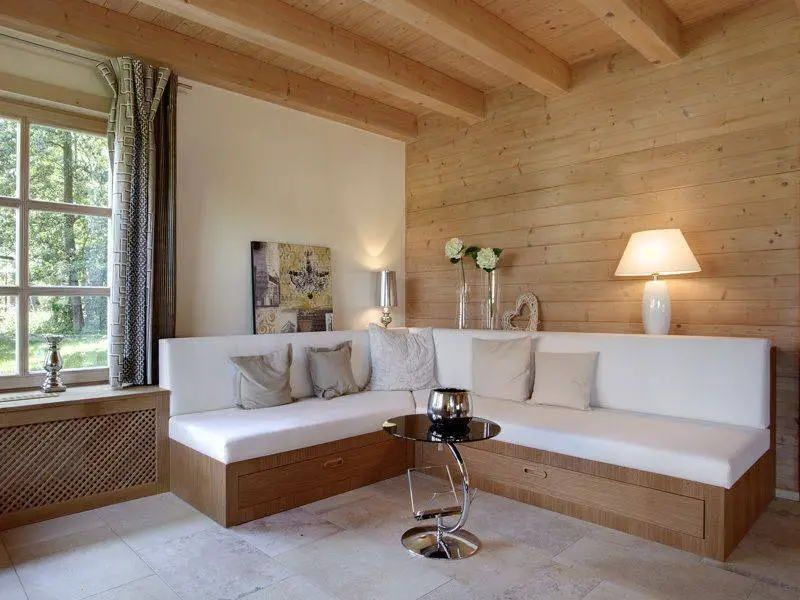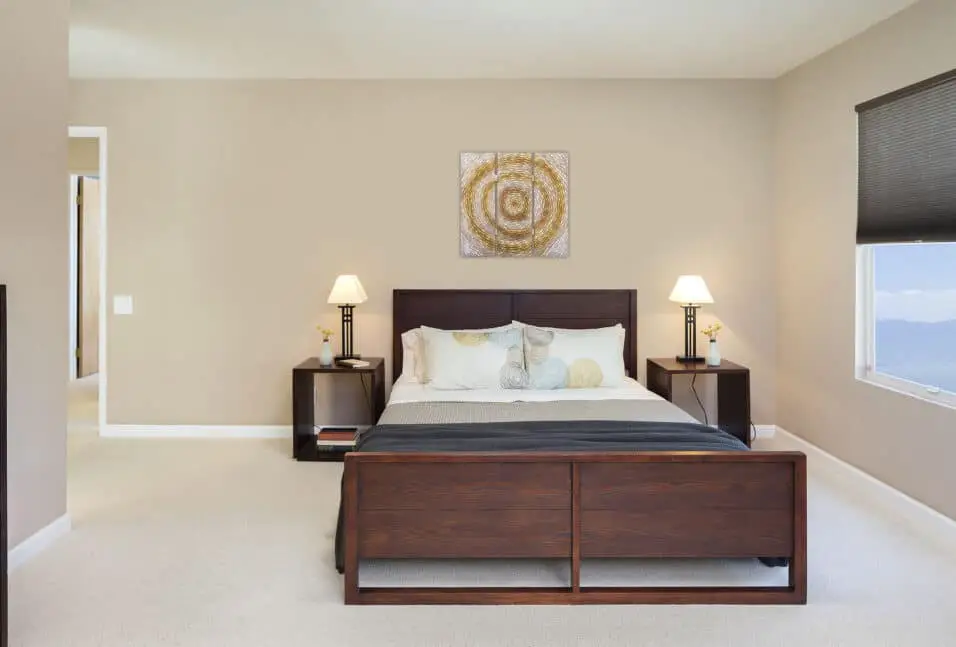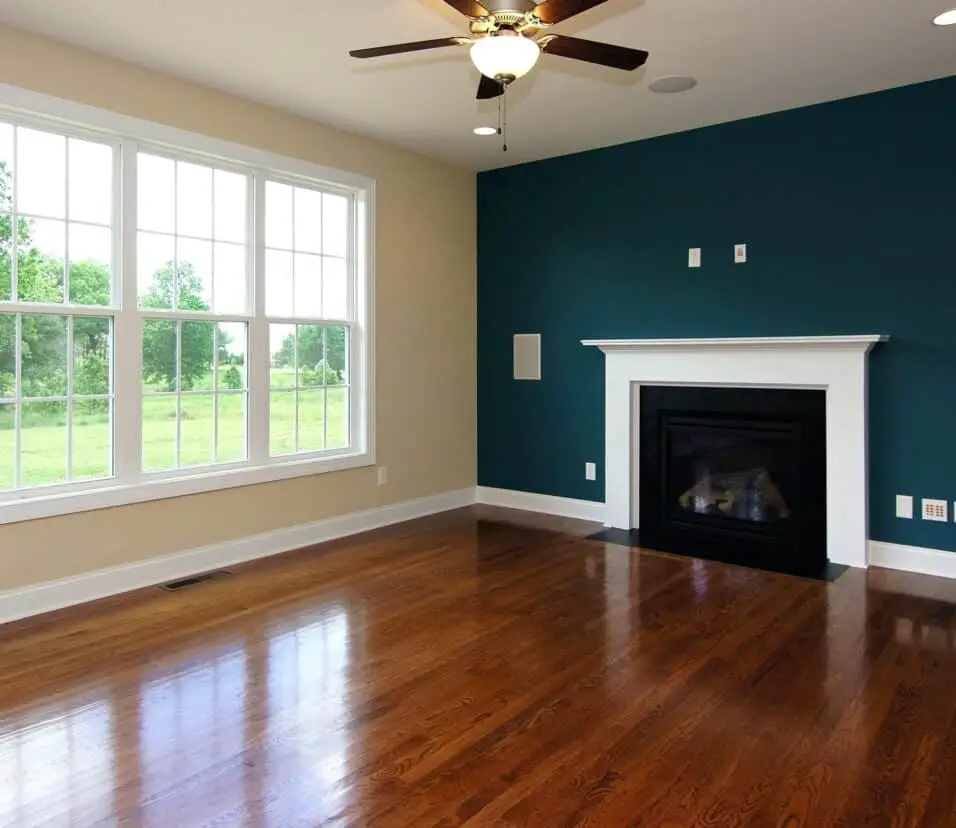How To Do Board And Batten Accent Wall
Introduction
How To Do Board And Batten Accent Wall: Are you looking to add a touch of elegance and charm to your home? Consider creating a board and batten accent wall. This classic architectural feature has been used for centuries to enhance the visual appeal of interior spaces. Whether you want to create a focal point in your living room or add character to your bedroom, a board and batten accent wall can transform any room into a stylish and sophisticated space.
Board and batten is a type of wall treatment that involves installing vertical boards (the boards) and then adding thin strips of wood (the battens) over the seams. This technique creates a visually interesting pattern on the wall, adding depth and texture to the room. The result is a timeless and elegant look that can complement a variety of interior design styles, from traditional to modern.
One of the great advantages of a board and batten accent wall is its versatility. From the doorway to the dining room and restrooms, it may be used wherever. The board and batten technique can be customized to give your home a rustic farmhouse or modern aesthetic.

How do you make a batten accent wall?
- Gather Materials. Materials:
- Measure and Cut the Horizontal Boards. Start off by measuring and cutting your horizontal boards.
- Measure and Cut the Trim Boards.
- Glue the Horizontal Boards.
- Attach Boards to the Wall.
- Caulk the Boards.
- Paint the Accent Wall.
- Enjoy Your New Decor.
A batten accent wall is a popular interior design trend that adds texture and visual interest to a room. It involves the installation of wooden strips, known as battens, onto a wall to create a unique and stylish feature. This type of wall treatment can be used in various spaces, such as living rooms, bedrooms, or even hallways, to enhance the overall aesthetic appeal of the room.
Benefits of a batten accent wall:
One of the main advantages of a batten accent wall is its ability to transform a plain and ordinary wall into a focal point. By adding dimension and depth, the battens create a visually appealing backdrop that can elevate the overall design of the room. Additionally, a batten accent wall can also help to define different areas within an open-concept space, such as separating the living area from the dining area.
Another benefit of a batten accent wall is its versatility. Battens come in various widths, lengths, and finishes, allowing for endless design possibilities. Whether you prefer a rustic, farmhouse look or a more modern and sleek aesthetic, there is a batten style that can complement your desired design theme. Furthermore, battens can be painted in any color, providing the opportunity to add a pop of color or create a cohesive look with the existing color scheme of the room.
Installation process:
Batten accent wall installation needs preparation and precision. Measure the wall and batten spacing before commencing the job. Battens are usually equally placed to create a wall pattern. After measuring, battens can be cut to length and sanded for a smooth finish.
Next, battens are nailed and adhesively affixed to the wall. Battens must be level and properly attached to the wall. After installing all the battens, fill any nail holes or gaps with wood filler and sand to create a seamless look. For the final effect, paint or stain the batten accent wall.
A batten accent wall is a fantastic way to add character and style to any room. With its versatility and ability to transform a plain wall into a stunning feature, it is no wonder that this trend has gained popularity in interior design. By following the proper installation process and considering the design elements, you can create a batten accent wall that enhances the overall aesthetic of your space.
What do you use for board and batten accent wall?
DIY Board and Batten Wall:
- 1×4 @ 8ft or 12ft (We used these pre-primed MDF boards)***
- 1×2 @ 8ft or 12ft (We used this pre-primed MDF board)
- 1 1/4″ and 2″ brad nails.
- Construction adhesive (we used Liquid Nails)
- Paintable Caulk.
- Lightweight Spackle.
- Paint (We used Mindful Gray by Sherwin Williams in eggshell)
Board and batten accent walls have become increasingly popular in interior design as they add a touch of rustic charm and architectural interest to any space. This type of wall treatment involves the use of vertical boards, known as battens, which are installed over a baseboard and topped with a horizontal board, known as a cap. The result is a visually appealing wall that can be customized to suit any style or aesthetic.
When it comes to choosing the materials for a board and batten accent wall, there are several options to consider. One popular choice is to use wood for both the boards and battens. This creates a warm and natural look that is perfect for farmhouse or cottage-style interiors. Wood can be stained or painted to match the existing color scheme of the room, or left unfinished for a more rustic and weathered appearance.
Accent wall
Another option for a board and batten accent wall is to use MDF (medium-density fiberboard) or hardboard. These materials are more affordable than wood and can be easily cut and installed. MDF and hardboard can be painted in any color, allowing for endless possibilities when it comes to customization. They also have a smooth and consistent surface, which can be advantageous for achieving a more modern or contemporary look.
If you prefer a more industrial or urban aesthetic, you may consider using metal for your board and batten accent wall. Metal panels or sheets can be installed vertically to create a sleek and minimalist look. This option works particularly well in modern or loft-style interiors, where the contrast between the metal and other materials, such as concrete or exposed brick, can create a visually striking effect.
Lastly, if you are looking for a budget-friendly option, you can also consider using vinyl or composite materials for your board and batten accent wall. These materials are durable, easy to clean, and come in a variety of colors and finishes. While they may not have the same natural or authentic look as wood or metal, they can still add visual interest and texture to a space.
What kind of wood do you use for board and batten walls?
You can use nearly any type of wood for an interior board and batten wall. Popular options include premium pine, poplar, and even MDF. For board and batten walls that won’t be painted, hardwoods such as oak and maple are great options.
Board and batten walls are a popular choice for adding a touch of rustic charm and character to any interior space. This type of wall treatment involves the use of wide boards, known as boards, which are installed vertically on the wall, with narrower strips, called battens, placed over the seams between the boards. The result is a visually appealing pattern that adds depth and texture to the walls. One important consideration when installing board and batten walls is the type of wood to use. The choice of wood can greatly impact the overall look and durability of the walls.
When it comes to selecting the right wood for board and batten walls, there are several factors to consider. First and foremost, the wood should be strong and durable to withstand the test of time. Hardwoods such as oak, maple, or cherry are excellent choices as they are known for their strength and resistance to wear and tear. These woods also have a beautiful grain pattern that adds to the aesthetic appeal of the walls.
Their use for board and batten walls
In addition to strength, it is important to consider the moisture content of the wood. Wood that is too moist can warp or shrink over time, leading to gaps or unevenness in the wall. Therefore, it is recommended to use kiln-dried wood for board and batten walls. Kiln-dried wood has been carefully dried in a controlled environment, reducing its moisture content and ensuring stability.
Another factor to consider is the availability and cost of the wood. Some types of wood may be more readily available and affordable in certain regions, while others may be more expensive or harder to find. It is important to choose a wood that fits within your budget and is easily accessible to ensure a smooth and cost-effective installation process.
Lastly, the aesthetic appeal of the wood should also be taken into account. Different types of wood have distinct colors, grain patterns, and textures. Consider the overall style and color scheme of the space where the board and batten walls will be installed, and choose a wood that complements the existing decor. Whether you prefer a light, natural wood or a darker, more rustic look, there are plenty of options to choose from.
How do you paint a board and batten accent wall?
How to paint a board and batten wall
Step 1 – Prep the room. This is the most important part. Cover all the furniture with a drop cloth. …
Step 2 – Paint! Load up the FLEXiO paint sprayer with paint. …
Step 3 – Clean up. Once the 2 coats are done, while the paint is wet, pull off all the painter’s plastic and tape carefully.
Painting a board and batten accent wall is a fantastic way to add visual interest and depth to any room. This popular design technique involves installing vertical boards, known as battens, over a base wall and then painting the entire surface to create a stunning focal point. Whether you’re looking to enhance the aesthetics of your living room, bedroom, or even a hallway, this step-by-step guide will help you achieve a professional-looking board and batten accent wall.
Choosing the Right Materials:
Before diving into the painting process, it’s crucial to gather all the necessary materials. Start by measuring the wall you plan to transform and determine the number of boards and battens required. These can be made of wood or MDF, depending on your preference and budget. Additionally, you’ll need a level, a tape measure, a saw, a nail gun or hammer, nails or screws, wood filler, sandpaper, and, of course, paint and brushes.
Preparing the Wall:
Once you have all the materials, it’s time to prepare the wall for the board and batten installation. Begin by removing any existing wallpaper or loose paint. Next, fill any holes or imperfections with wood filler and sand the surface until it’s smooth. This step is crucial for achieving a flawless end result. Afterward, wipe the wall clean to remove any dust or debris that could affect the paint’s adhesion.
Installing the Boards and Battens:
With the wall prepped, it’s time to install the boards and battens. Start by measuring and marking the desired height of your accent wall. Using a level, draw a horizontal line across the wall to ensure the boards are installed straight. Then, cut the boards to the appropriate length and attach them to the wall using a nail gun or screws. For added stability, it’s recommended to secure the boards into the wall studs. Repeat this process until the entire wall is covered with vertical boards.
Painting the Accent Wall:
Once the boards and battens are securely in place, it’s time to paint your board and batten accent wall. Begin by applying a coat of primer to ensure better paint adhesion and coverage. Allow the primer to dry completely before moving on to the paint. Choose a paint color that complements the overall color scheme of the room. Using a brush or roller, apply the paint evenly to the entire wall, including the boards and battens. For a more dramatic effect, consider using contrasting colors for the boards and the wall. Allow the paint to dry thoroughly between coats, and apply additional coats as needed for full coverage.
By following these instructions, you can successfully paint a board and batten accent wall that will transform the look and feel of your space. Remember to take your time, pay attention to detail, and enjoy the process of creating a stunning focal point in your room.
What material is used for board and batten walls?
Both wood and MDF are common for board and batten installation. MDF is easier to work with, smoother, and more cost-effective. Wood is solid and more durable, and ideal for wet areas, but you’ll need to use a high quality wood that has no knots or warping (this will increase the cost).
Board and batten walls are a popular choice for adding a touch of rustic charm and character to any interior or exterior space. This classic architectural feature consists of alternating wide boards (the “”boards””) and narrow strips (the “”battens””) that are vertically installed on a wall. The combination of these elements creates a visually appealing pattern that can enhance the overall aesthetic of a room or building. If you are considering incorporating board and batten walls into your design, it is important to understand the materials commonly used for this purpose.
Wood looks natural and authentic, complementing farmhouse and coastal designs. Wood choices is varied. Cedar’s durability, decay resistance, and pest repellence make it a popular choice. Pine is another popular wood because of its price and adaptability. Oak or maple can also be used for a more elegant design. Wood and other materials can be used for board and batten walls. Modern and industrial metal panels or corrugated metal sheets might be used.
The used for board and batten walls
When it comes to installation, it is important to consider the specific requirements of each material. Wood boards and battens are typically nailed or screwed directly onto the wall studs, ensuring a secure and stable attachment. Metal panels may require specialized fasteners or brackets to ensure proper installation. Fiber cement boards are usually installed using a combination of adhesive and mechanical fasteners, providing a strong and long-lasting bond.
Board and batten walls can be constructed using a variety of materials, each offering its own unique characteristics and benefits. Wood, such as cedar or pine, provides a natural and timeless look, while metal panels or fiber cement boards offer a more contemporary and durable option. The choice of material ultimately depends on the desired aesthetic, budget, and maintenance requirements. Regardless of the material chosen, board and batten walls are sure to add a touch of architectural interest and visual appeal to any space
A board and batten accent wall serves as a stunning focal point in any room, adding depth, texture, and visual interest to the space. This type of wall treatment involves installing vertical boards (the “”boards””) with narrow strips (the “”battens””) placed over the seams between the boards. The purpose of this accent wall is to create a sense of architectural detail and character, transforming an ordinary wall into a statement piece.
Accent wall
One of the main advantages of a board and batten accent wall is its versatility. It can be used in various design styles, from rustic and farmhouse to modern and contemporary. The contrasting lines and shadows created by the boards and battens add dimension and create a dynamic visual effect. Additionally, this type of wall treatment can help to visually divide a large space or highlight a specific area, such as a fireplace or a bed in a bedroom.
Furthermore, a board and batten accent wall can also serve practical purposes. It can help to protect the wall from damage, such as scratches or dents, especially in high-traffic areas. Additionally, it can be used to hide imperfections or uneven surfaces on the wall, providing a smooth and uniform appearance. Overall, a board and batten accent wall not only enhances the aesthetic appeal of a room but also adds functionality and durability to the space.
How do you choose the right materials for a board and batten accent wall?
When it comes to choosing the right materials for a board and batten accent wall, there are a few factors to consider. Firstly, you’ll want to decide on the type of wood you want to use for the battens. Common options include pine, cedar, or even MDF if you’re looking for a more budget-friendly choice. Each type of wood has its own unique characteristics, so it’s important to choose one that aligns with your desired aesthetic and durability requirements.
Next, you’ll need to select the material for the boards that will be used as the base of the accent wall. These boards can be made of wood, plywood, or even drywall. Wood boards provide a more rustic and natural look, while plywood and drywall offer a smoother and more modern appearance. Consider the overall style of your space and choose the material that complements it best.
Additionally, you’ll need to think about the finish or paint you want to apply to the boards and battens. This will depend on your personal preference and the desired look you want to achieve. Whether you opt for a stained finish to showcase the natural beauty of the wood or a painted finish to match your existing decor, make sure to choose a high-quality product that will withstand the test of time.
What are the step-by-step instructions for installing a board and batten accent wall?
Installing a board and batten accent wall can be a great way to add visual interest and texture to any room. Here is a step-by-step guide to help you through the process:
Measure and plan:
Start by measuring the wall where you want to install the board and batten. Determine the height and width of the wall, and decide on the spacing and size of the battens. This will help you calculate the number of boards and battens you will need.
Gather materials:
Once you have your measurements, gather all the necessary materials. You will need boards for the battens, a baseboard, a top cap, construction adhesive, a level, a miter saw, a nail gun, nails, a tape measure, a pencil, and a stud finder.
Prepare the wall:
Before installing the battens, it’s important to prepare the wall. Remove any existing trim or molding, and repair any imperfections on the wall surface. Sand the wall if necessary, and apply a coat of primer if desired.
Install the baseboard:
Start by installing the baseboard along the bottom of the wall. Use construction adhesive and a nail gun to secure it in place. Make sure it is level and straight.
Install the battens:
Measure and mark the desired spacing for the battens on the wall. Use a level to ensure they are straight. Apply construction adhesive to the back of each batten and press it firmly against the wall. Secure the battens with a nail gun, making sure to nail into the studs for added stability.
Add the top cap:
Once all the battens are installed, add the top cap along the top of the wall. Use construction adhesive and a nail gun to secure it in place.
Finishing touches:
Fill any nail holes or gaps with wood filler, and sand the surface smooth. Prime and paint the wall in your desired color. Finally, step back and admire your beautifully installed board and batten accent wall!
By following these step-by-step instructions, you can successfully install a board and batten accent wall and transform the look of any room in your home.
Are there any specific tools or equipment required for this project?
When it comes to installing a board and batten accent wall, there are a few specific tools and equipment that you will need to ensure a successful and efficient project. These tools will help you achieve precise measurements, secure the boards firmly, and create a professional-looking finish.
Measuring Tape: A measuring tape is essential for accurately measuring the length and width of your wall, as well as determining the spacing between the boards.
Level: A level is crucial for ensuring that your boards are installed straight and even. It will help you avoid any crooked lines or uneven gaps.
Miter Saw: A miter saw is used to cut the boards at precise angles, especially for the corners and edges. This tool will help you achieve clean and seamless joints.
Nail Gun or Hammer: To secure the boards to the wall, you will need either a nail gun or a hammer. A nail gun is recommended for faster and more efficient installation, but a hammer can also do the job.
Nails or Screws: Depending on your preference, you can use either nails or screws to attach the boards to the wall. Make sure to choose the appropriate length and gauge for a secure hold.
Construction Adhesive: Using construction adhesive is optional but highly recommended. It helps to reinforce the boards and prevent any potential warping or shifting over time.
By having these specific tools and equipment on hand, you will be well-prepared to tackle the installation of a board and batten accent wall with confidence and precision.
Can you provide any tips or tricks for achieving a professional-looking finish on a board and batten accent wall?
When it comes to achieving a professional-looking finish on a board and batten accent wall, there are a few tips and tricks that can make a significant difference in the final result. Firstly, it is crucial to properly prepare the wall surface before starting the installation process. This includes ensuring the wall is clean, smooth, and free from any imperfections. Fill in any holes or cracks with a suitable filler and sand the surface to create a smooth canvas for the board and batten installation.
Secondly, take the time to carefully measure and plan the layout of the boards. This will help ensure that the spacing between the battens is consistent and visually appealing. Using a level and a chalk line, mark the desired placement of each batten on the wall before attaching them. This step is crucial for achieving a polished and professional look.
Another important tip is to invest in high-quality materials. Opt for sturdy and durable boards and battens that will withstand the test of time. Additionally, consider the overall aesthetic of the room and choose materials that complement the existing decor. Whether you prefer a rustic or modern look, selecting the right materials will greatly contribute to the overall professional appearance of the accent wall.

Conclusion
Creating a board and batten accent wall is a fantastic way to add character and charm to any space. Whether you are looking to enhance the aesthetics of your living room, bedroom, or even a hallway, this DIY project can transform the entire look and feel of the room. By following the instructions provided, you can easily achieve a stunning accent wall that will become the focal point of your space.
One of the great advantages of a board and batten accent wall is its versatility. This design technique can be adapted to suit various interior styles, from farmhouse to modern. By choosing the right materials and finishes, you can customize the wall to match your existing decor or create a striking contrast. The possibilities are endless, allowing you to unleash your creativity and make a statement in your home.
Not only does a board and batten wall offer aesthetic benefits, but it also provides practical advantages. The added texture and dimension can help to visually expand a small room, making it appear larger and more spacious. Additionally, the vertical lines created by the battens can draw the eye upward, adding height and creating a sense of grandeur. This technique can be particularly effective in rooms with low ceilings or limited natural light.




